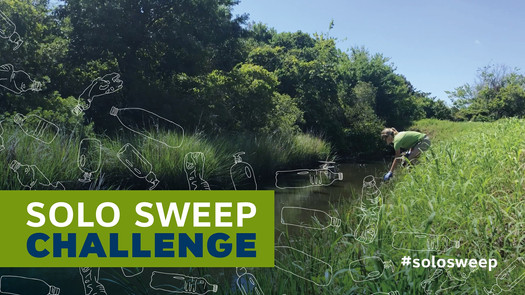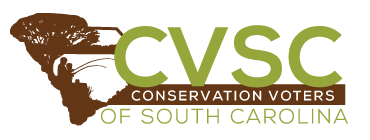Choking on Plastics? & Found Object Spirit Animal Sculptures
- Cultivate
- Mar 13, 2018
- 7 min read
Updated: Apr 21, 2020
Data From Charleston's Coasts and Critters
March 13th, 2018 at Bowties JI Speakeasy, Charleston, SC
Presented by:
Kea Payton, MS, Marine Science Educator with Patriots Point & Keep Charleston Beautiful, PADI Scuba Instructor with Charleston Scuba
Marielena Martinez, MFA, local artist and STEAM educator with Cultivate SciArt, the Gibbes Museum of Art, and Engaging Creative Minds
Cultivate SciArt began its 2018 season with a very important question - are we "Choking on Plastics?" Kea Payton shared research on the prevalence of plastics in Charleston marine waters, sediments, and the organisms that live there. Marielena Martinez guided participants to repurpose “trash” into magnificent found-object animal spirit sculptures, inspired by Hopi Kachinas. Discussions on the threats plastics pose to the environment and our health evolved into ways the community could get involved to alleviate the "plastic problem" in Charleston, SC.
Plastic, Plastic, Everywhere...How Much in Our Ocean?
From your take-out containers and cars to the poly-blend shirt on your back, plastic is everywhere. Globally, three hundred million tons of plastic (and counting**) are produced from crude oil each year. Of that, 8-14 million metric tons end up circulating our world’s oceans [1] finding their way to great ocean garbage patches [2]. Kea Payton, MS, devoted her master's research with the College of Charleston Grice Marine Biology Program to better understand the distribution of plastic within Charleston's marine ecosystem. To help us visualize these hard to comprehend values, Payton asked us to picture an elephant -- then try to picture 100 million elephants -- that is the number it would take to equal the 300 million tons of plastic we produce each year. (As of 2016 only ~300,000 African Elephants actually exist.) And this plastic never goes away. It just slowly breaks up into smaller pieces over time.

Plastics pose countless health threats, including chemical absorption, entanglements, and the suffocation of wildlife [3]. Payton explained that many organisms are known to mistake plastic items as natural prey, and so they have seen plastic ingestion throughout the marine food web, from the tiniest of zooplankton [4] to sea turtles, dolphins and birds of prey [5].
While entanglements and guts full of larger plastics in our charismatic megafauna are hard to miss, the fate of microplastics - plastic particles 5 mm and smaller - within the marine environment and food web is more poorly understood. Microplastic particles are produced in the form of fibers from textiles, nurdles shipped around the world as starting material for plastic packaging and products, microbeads now banned from cosmetics, and through the breakdown of larger plastics, such as the treads of our tires, styrofoam, and other products that become brittle and fragment after UV exposure and wave action [6].
What Happens to Microplastics in Charleston Estuaries?
Microplastics are abundant in Charleston marine sediments with ~100-1500 per square meter (slightly less than a 3ft x 3ft area) and 3-11 particles per liter (~quart) in the Charleston Harbor water column [7]. Payton highlighted three important factors contributing to microplastics in Charleston estuaries - our rapidly growing population turning ~50% of the land surrounding Charleston's waterways into impervious surface (pavement!) [8], ten million vehicle miles traveled daily in Charleston county making tire shreds one of the most abundant microplastics in local estuaries [6,9], and 2,000 ships per year transporting cargo into and out of Charleston Harbor [10].

What does this mean for our estuaries? These toxic, ubiquitous small plastic particles have the potential to be ingested by the animals that live there, and ultimately us [11]. Payton collected samples across river-ocean tidal fronts (Cooper and Ashley Rivers) and trophic levels (herbivores, omnivores, top predators) to assess just how much of these microplastics were getting into our marine food web. She documented microplastics in zooplankton (tiny floating marine animals) and fishes! What this means to their health and ours is an unanswered question for future research.
What Can You Do to Reduce Plastic Pollution in Our Waters?
If you find that information alarming, fortunately, you can help solve the problem. The Charleston

community has responded to marine debris by banning single-use plastic bags, styrofoam, and plastic balloons, as well as increased community education programs. Carolee Williams, Lowcountry Field Director for the Conservation Voters of South Carolina**, informed participants about plastic legislation under review and encouraged us to each take an active role by contacting our state and local representatives. Urge them to support bills to reduce plastics which inevitably find their way into our waterways, wildlife and food web. Charleston Waterkeeper’s** Staff Scientist, Cheryl Carmack, also shared opportunities to volunteer to help remove the trash from our marshes, rivers and beaches. And don't forget, there are two more R’s to the “Reduce, Reuse, Recycle” motto -- Refuse and Repurpose. Refuse plastic grocery bags, take-out containers, and straws. Learn about creative ways to repurpose your plastic waste. And create beautiful art with the colorful pieces of plastic and other materials you find glancing down on your walks.
Repurposing Trash into Art: Making Spirit Animal Sculptures
In the "spirit" of repurposing Marielena Martinez drew inspiration from the Native American Hopi peoples, a sovereign nation in the northeast area of Arizona. The tribe has lived with a motto of being "peaceful and humble farmers respectful of the land and its resources." They believe it is essential to maintain harmony with the world around them. Kachinas (katsinam in Hopi) are the spirit beings believed to live among them as guardians and messengers for maintaining this balance and kachina dolls are the sculptures they use to represent them. After introducing us to some of the Hopi Kachina spirits, Martinez called upon participants to pull from the eclectic mix of "trash" collected by Charleston Waterkeeper and Cultivate SciArt volunteers on trash sweeps and dog walks. Discarded household items, remodeling scrapes, SEWE event debris, and fishing gear were just some of the items participants pulled from. Hot glue was used to mend pieces together, with the option to whitewash their figures with spray paint, and then color and decorate their sculptures to bring out their own "spirit animal." Some artists were inspired by the materials themselves, others by the process, and some even were guided by specific animals they had in mind. In the end, every sculpture turned out as unique and beautiful as the spirit of the artist who created them.
Beautiful spirit animals made by workshop participants.
By combining found objects from clean-up events on the marsh, roadways, household trash with imagination, you too can create your own Kachina-inspired, spirit animal sculpture.
"We too can be stewards of our land and waters." - Kea Payton
Make Your Own Found Object Spirit Animal
Conduct your own clean up (this cleanup can be around the house, in your neighborhood, beach, marsh, just about ANYWHERE!) Need ideas? Try the SC Aquarium Solo Sweep Challenge!
Layout your materials and plan the design of your found object spirit animal
Use a hot glue gun or a good adhesive to attach your pieces together. (Pro-Tip: Use a block of wood or sturdy material as a base to keep your sculpture standing upright. Hammer in a nail for extra support.)
Once you are happy with your sculpture you can whitewash it with paint or leave it as is, and then decorate with markers, feathers, foliage or beads.
Display it for everyone to see and draw inspiration. Share photos with us via email or Facebook and Instagram #CultivateScienceArt. And be part of the #EarthDayArtChallenge.
Want to have even more fun? Challenge your friends and family to conduct their own clean up and put your masterpieces together at home or over your favorite video chat service!
**UPDATES:
->More research is being conducted to identify microplastics in dolphins, oysters, and fishes in Charleston Harbor through collaborations with SCDNR, College of Charleston, and The Citadel. The millions of tons of plastics entering our environment continue to grow each year.
->Carolee Williams is running to be Public Service Commissioner for Congressional District 1 in the State of South Carolina. If you want a seasoned civil servant and environmentally concise representative serving on this important public utility oversight panel, contact and encourage your state representatives to support her candidacy. These commissioners are elected by our state congress representatives.
->Charleston Waterkeeper has joined forces with Coastal Conservation League and Southern Environmental Law Center in a federal lawsuit against Frontier Logistics. This shipping company is responsible for polluting Charleston waterways, marshes and beaches with plastic nurdles. Click here for more information.
Learn More About Microplastics in Our Oceans
Hot of the Presses! Payton and colleagues' data on microplastics in copepods and other zooplankton in Charleston Harbor, South Carolina
**Care About Plastics in Our Environment? Get Involved!**

Be sure to check out ALL the event pics, art & reflections in our Google photo album.
And tag, comment, like and share...
******* Join Our Blog Community! *******
Become a member to add comments, updates and ask questions to the scientists, speakers and artists. Members may also request copies of presentation slides, add photos and much more! Join and help CULTIVATE Science + Art + Community, because it takes a village to grow and make change.
References
[1] Jambeck, J. R., Geyer, R., Wilcox, C., Siegler, T. R., Perryman, M., Andrady, A., Narayan, R., and K. L. Law. 2015. "Plastic waste inputs from land into the ocean." Science. 347(6223). doi: 10.1126/science.1260352
[2] "There's Not Just 1 Great Oceanic Garbage Patch - There's 5." Global Citizen. July 25, 2017. https://www.globalcitizen.org/en/content/5-ocean-garbage-patches-plastic-pollution/
[3] Rochman, C.M., Browne, M.A., Underwood, A.J, van Franeker, J.A., Thompson, R.C., and L.A. Amaral-Zettler. 2016. The ecological impacts of marine debris: unravelling the demonstrated evidence from what is perceived. Ecology. 97(2): 302-312. doi: 10.1890/14-2070.1
[4] Desforges, J.P.W., Galbraith, M., Ross, P.S., 2015. Ingestion of microplastics by zooplankton in the northeast Pacific Ocean. Arch. Environ. Contam. Toxicol. 69 (3), 320–333. doi: 10.1007/s00244-015-0172-5
[5] Moore, C. J. 2008. Synthetic polymers in the marine environment: rapidly increasing long-term threat. Environmental Research. 108: 131-139. doi: 10.1016/j.envres.2008.07.025
[6] Weinstein, J.E., Crocker, B.K., Gray, A.D., 2016. From macroplastic to microplastic: degradation of high-density polyethylene, polypropylene, and polystyrene in a salt marsh habitat. Environ. Toxicol. Chem. 35 (7), 1632–1640. doi: 10.1002/etc.3432
[7] Gray, A., Leads, R., Wertz, H., Weinstein, J.E., 2018. Microplastic in two South Carolina estuaries: occurrence, distribution, and composition. Mar. Pollut. Bull. 128C, 223–233.
[8] National Land Cover Database (2011). https://www.mrlc.gov/data/legends/national-land-cover-database-2011-nlcd2011-legend
[9] South Carolina Department of Transportation (2015).
[10] South Carolina Port Authority (2016).
[11] Andrady, A.L. 2011. Microplastics in the marine environment. Marine Pollution Bulletin. 62(8): 1596-1605. doi: 10.1016/j.marpolbul.2011.05.030
Blog contributors: Kea Payton, Bridget Knutson & Bobbie Lyon




















































